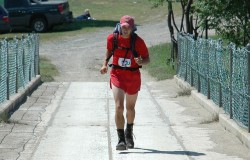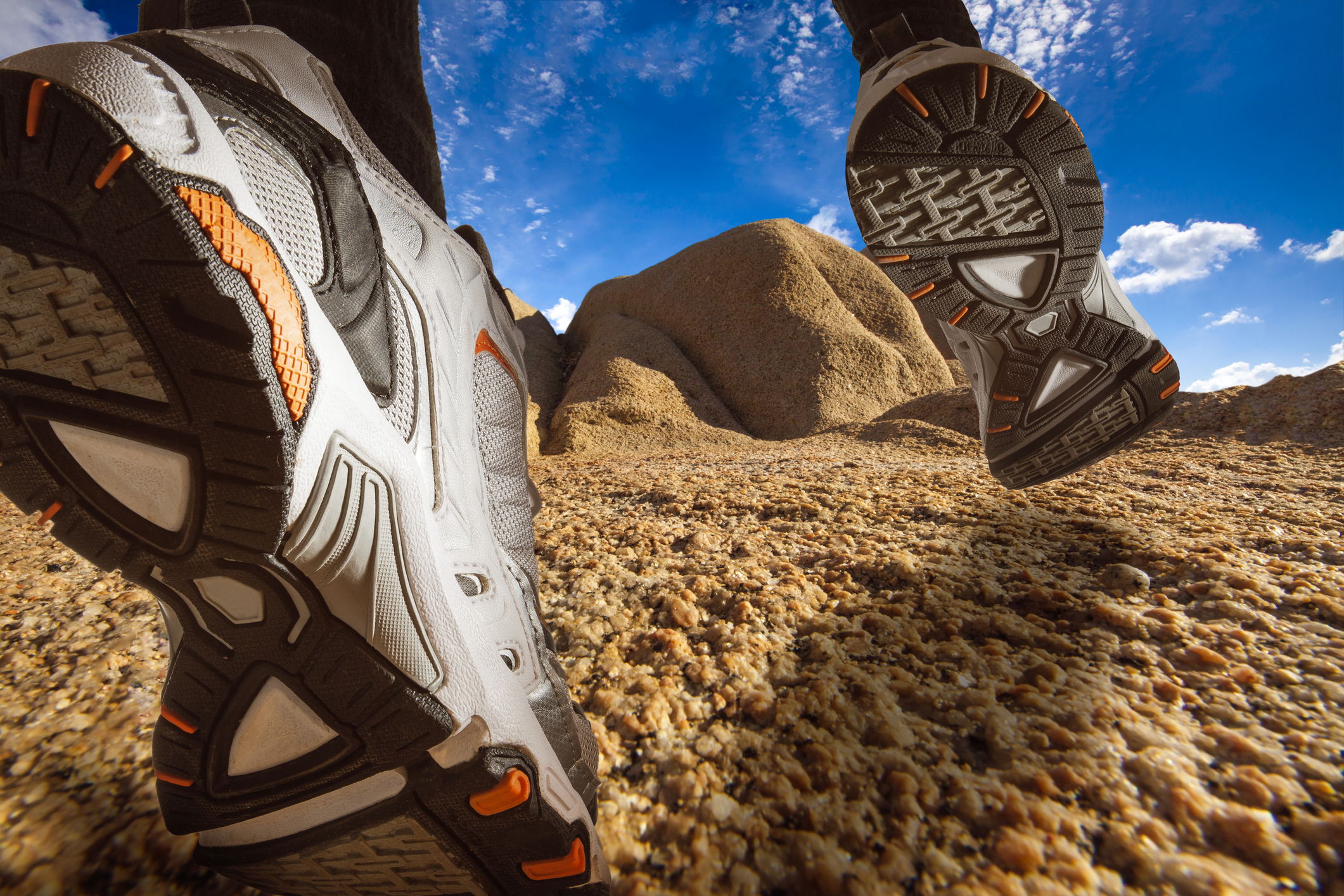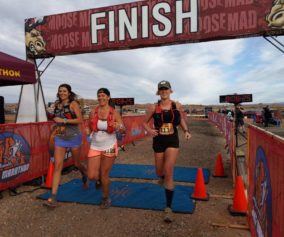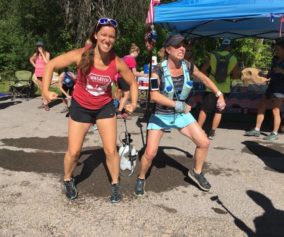So here it is, it all comes to this. The true beginning of your 100 mile training. Over the last 4-5 weeks, the Journey To 100 Miles series has been getting us ready for this. Training. By now, We’ll assume that you’ve Chosen Your Which 100 Miler is your First, You’re Committed, You’ve done ample research, and you’ve started building a base. This amazing journey continues with the real nitty gritty now, the training. Just like in the last post on Base Building, I have to offer up a short disclaimer:
There are countless training programs that cater to runners of all abilities, speeds, sizes, styles, etc etc etc. That is a very good thing because it provides all of us with options. Ultimately, we are all an experiment of one. What works for me, may not work for you and vice versa.. but it never hurts to try. Throughout this series, I am attempting to provide runners with the very basics of ultra training in preparation for running 100 miles for the first time. The knowledge I have gained over the last 7 years has come from a wide variety of sources.. mostly from veteran ultra runners I’ve met along the way and my own personal experiences. My goal is to not help you win a 100-miler, but to successfully finish one. Food for thought…
Now before we dive even further into this, I want to be pretty clear about where I’m coming from. I don’t use words like fartlek or interval. I don’t even know what they mean. I follow Hal Hignon on Facebook, and half of what the guy says I try to debunk with something clever. I do in fact run with a watch, a fancy GPS one, and I only use it to measure distance. I don’t constantly monitor my splits, or my pace at all. Running for me is done in it’s simplest form: Left – Right – Repeat. That, to me, really is the holy grail of ultra marathon training. Because when it comes down to it, 70+ miles into a 100-miler, that’s all you’re going to remember to do. Left – Right – Repeat. If you want to run faster, train faster. If you want to run further, train further. etc. Simple.
Getting Started
Ok.. again, I’m using the 2013 Vermont 100 as my example. The race is held on July 20-12, 2013. My training plan is going to be based on a 50 Mile “Check-In Race” about 3 months out from the event itself. I’m running this 50 miler as a race. My plan will be to train for and run that event just as I would the Vermont 100. Same pace, same race plan, everything. This “check-in” will allow me to see exactly where I’m at and how my plan works. If my goal is sub 24 hours, I’ll want to run the check-in at 10 hours or less (dependent on terrain). Now, the key is.. to then run another 50 miler in May and/or June as a training run(s). That is, not racing them, but a continuation of working out all of my kinks on the way to my first 100 miler.
The First 4 Months – Training for a 50 miler
So, if we’re going to be training for a 50 miler in April, I’ve selected the Rockin’ K 50 on April 6th in Kansas (by “selected” I mean, I’ve registered for the event). Now that I have my first 50 miler date in mind, I go to the following site (http://www.scrunners.org/ultrasch) and fill in the information queued, which then spits out a training plan for me HERE. This is how we are spending the first 4 months of training, preparing for a key 50 Mile Check-In. The program uses a form of something called periodization. You will start to run longer, over time, on your back-to-back weekend long runs. Rest plays a huge role in the plan, and they offer us some “cool down (CD)” weeks. These rest days and cool down weeks play a vital role in injury prevention and something I call “burn-out prevention.” And finally they mention, “When you are training for a 50 mile event all other races should be used as training runs, including 50Ks. When it comes to 50 mile training, go for “time on your feet” over fast races.”
Before we move on, I want to emphasize pace. Everyone is probably asking, “what pace should I be running at?” I typically train at what I call “conversation pace.” Which means, we run at a pace where we can, just barely, comfortably hold a conversation. If by running faster, you couldn’t hold a conversation.. you’re there. If by running slower, you’d be prone to blabbering on.. that’s too slow. Got it? And don’t worry about it.. over time, if you stick to the training plan, you’ll be able to run faster, further, and still be able to converse. PATIENCE. It’s a process. Don’t get lost in splits, and minutes per mile pacing.. let’s be real! During a 100 mile race.. depending on terrain and a litany of other factors, splits and pace will fly quickly out the window! Most of you marathon runners are used to writing your goal splits for the race on your arm. This is so far beyond mattering (or logical) over the course of 100 miles, that you’d end up having the worst tattoo on the course. So skip it.
Periodization
As you can see from the training plan that the above website has laid out for us, it all works under the guise of something called Periodization. Basically, you alternate peak weeks with cool down weeks. We build up over the course of 7 weeks to a peak weekly mileage of 48 mpw, then cut it down to a cool down week of 36 miles. Then, we pick up where we left off by running what the next sequential addition of miles would be for that next week. From here, it will always be 3 weeks of building and then a cool down week. “The goal of periodizing an exercise program is to optimize training during short (e.g., weeks, months) as well as long periods of time (e.g., years, a life time, or an athletic career).” [1]
A few more points on this. A little further down I’m going to talk to you about Fat Ass runs. Notice how the longest training run in the above schedule is 50K (31 Miles)? That’s because many of us ultra-runners truly believe that anything beyond a 50k, does more harm than good. Also, this training plan prepares you for a 50 miler. Once you run that 50 miler in April, you’ll need to take it upon yourself to create your own training plan that goes beyond and helps you build your mileage to an 80-100 mile week. You just need to adjust your mid-week and weekend runs, just as the plan you just followed does, for a time leading up to 3-4 weeks out from your 100 miler. Your peak week, should be either 3-4 weeks out from your 100 miler and should feature 80-100 miles of training, of which no run is longer than a 50K in distance. At the end of that peak week, you start your taper.
An example of a 4 week taper would be: Peak Wk = 100 mpw, Taper Wk 1 = 80 mpw, Wk 2 = 60 mpw, Wk 3 = 40 mpw, Wk 4 = 20 mpw. Then, you’ll run 9 miles the week of the race, none later than Wednesday.
(Note: Many folks in the ultra community are CooCoo for Cocoa Puffs over Anton Krupicka and his 200 mpw training programs. I’m not one of them. I find that Anton has a regular injury schedule based on over-use or over-training. Sure he’s fast and amazing, I’ll admit it. But you’re not him.)
Closely Mimic The Actual Course
As closely as you can, try to train on terrain that closely resembles the terrain of the 100 Mile race. If your 100 is being run on pavement, train on pavement. If your 100 is a mixture of roads and trail, train on a mixture of roads and trails. If your 100 is a mountain race and you live in Florida or on the plains, pull a tire. I wish I was kidding, but I’m not. You need to do all that you possibly can to mimic the conditions you’ll encounter on race day. All of those folks who train to run the Badwater 135, log training miles while inside a sauna. Ultra runners all over the country do whatever they can to mimic the course and conditions they’ll experience during the race, during their training. This is essential to your success. Someone once asked me, “Sherpa, I live in Ohio and want to train for a rocky 100 miler in Virginia, what do I do?” I told him, “Go outside and kick the curb 10 times a day, every day, as part of your training plan.” I wasn’t kidding.. He’d later find out why.
Fat Ass Runs
Create your own series of Fat Ass training runs. Then advertise your events,s the group runs that they are, and get folks to come out with you. This will help those long 50K training runs to tick right on by. Before long, you’ll think nothing of running 50K, which is great for the mental game of running 100 miles. Mix these events into your training plan above, it’s ok to alter your plan to accommodate these longer runs. You need to do them, so you might as well try and get them done with others. Besides, those who show up to run with you just may have run a 100 miler before; and the advice they are willing to dispense is invaluable!
Create Your Own Support Community
If you’re lucky, there’s a local Ultra Running Club right in your own Backyard. New Englanders have Gil’s Athletic Club (GAC), or Trail Animals Running Club (TARC). Coloradans have Team CRUD (Coloradans Running Ultra Distances), Folks in Kansas have the Trail Nerds. These are just a few, but a google search, “Your State Ultra Runners”, is likely to show at least one group near you. If there isn’t, now is your chance to create your own. Join the Ultra-List. Not only a great resource deep with information, but a place for you to introduce yourself to over 5,000 ultra runners and ask “who lives near me?”
Track Your Progress
Simple as that, find an online progress tracking website and plug all of your runs into it. Make it public, continue with that piece on commitment and hold yourself accountable. Here are some of the more popular websites people use: Dailymile, RunningAhead, MapMyRun, NikePlus.
Cross Train
Lastly, it is important to cross train. I could write a whole ‘nother post on this topic alone. Some folks use Cross Fit.. I’m pretty weary of the Cross Fitters because many of those trainers want you to put on upper body weight. A big no no! I like to engage in some kind of muscle confusion, high heart rate, circuit training at the gym 2-3x per week. I also like to swim, mountain bike. As much as these activities help me strengthen my core (crucial!), they help break up the sheer monotony of just running all the time.
 The above is a photo of me finishing my first ultra (32.6 Mile Wakely Dam) in 2005. Notice the slumped forward posture while running? That’s called ZERO CORE STRENGTH. This was after 50K. Imagine how amazing it looks after 100 miles. DO CORE TRAINING! It’s NOT just running!
The above is a photo of me finishing my first ultra (32.6 Mile Wakely Dam) in 2005. Notice the slumped forward posture while running? That’s called ZERO CORE STRENGTH. This was after 50K. Imagine how amazing it looks after 100 miles. DO CORE TRAINING! It’s NOT just running!
It’s Not All Running
Once you run beyond 50K and get into running 50 to 100 miles, many runners are incredibly surprised. Surprised when they show up to a race and see just how much of the event is hiking. It’s true; ultra-runners, for the most part, don’t run the whole thing. It is a combination of running, walking, crawling, crying, bathroom breaks, food and water breaks, and scenic vista breaks, that comprises your finishing time. That’s right, those who run 100 miles in sub-24 hours do so at an average minute per mile pace of 14:23 while doing all of the above. And those who break the typical 30-hour time limit do so at an average pace 17:59. Think about that for a minute.
It is essential that you practice hiking as well as running. If you race does not feature big climbs, practice walking because YOU WILL WALK A LOT during a 100 miler. Failing to train your walking muscles to walk faster, will only slow you down. Don’t allow yourself to mall walk during a race, and train yourself to power-walk and power-hike. Furthermore, when you train.. if you do wear a watch and you stop to pee during the run; don’t stop your watch! Why? Because the clock isn’t going to stop for your to pee during the race, so it shouldn’t stop for you during training. Keep it running pops.
All of this info is what has worked for me over the years. It saw me to three sub-24 hour finishes in 4 attempts at the Vermont 100 (finished #4 28:38), Western States, Leadville, a loop at the Barkley, etc etc etc. I’m not a fast ultra-runner, and not even close to the best. But when I followed my own advice above, I was finishing 100 mile races in the top 3rd of the field without words like fartlek or interval training.. or paying attention to my watch adneauseum.. it was all Left-Right-Repeat.
There is mountains of information out there on the internet for you to browse through when creating your training plan. My plan tends to be almost too simplistic for the type-A runners out there. Again, we’re all an experiment of one and we each must find what works and must pain through what doesn’t. Be smart about it and don’t just take my work for it. For an abundance of other 100 Mile Training Advice, I highly recommend you read until your eyeballs fall out at: http://www.ultrunr.com
If you’ve enjoyed this or other posts in Journey To 100 Miles, please consider a small donation to my Vermont 100 Fundraising Efforts. You can read more by clicking HERE
Coming Up on Journey To 100 Miles:
Next Post: Gear For Success
And Later: Ultra Training Through Winter
This post is part of a series known as Journey To 100 Miles.
We welcome your comments to add to the discussion.
Previous Posts:
1. Journey To 100 Mile Intro
2. Choosing Your First 100 Miler
3. Ultra Commitment
4. Researching An Ultra
5. 100 Miler Base Building
[1] http://training.strengthengine.com/periodization.shtml




















Hey SherpaJohn! I finally get to meet you! I met Jerry out at Rockin K last year. My name is Ron (by the way), and I’m sure you will have a great time out there! Make sure you wear shoes that drain well!!!
Super Beard… looking forward to it. I’m not afraid of wet feet. My 1st 100 saw two waist deep stream crossings every 3-4 miles for the entirety of the event! See you in Kansas!
GREAT Article, and I have already downloaded my training plan for the Silver Rush 50! My question is this, what are your thoughts about breaking up the mid-week longer runs? I will be Coaching during that time and doing a 5 and 5 day would be easier.
Mitch,
Great! Silver Rush is an EXCELLENT race… I personally think the course is tougher and prettier then the Leadville 100. Enjoy your day out there.. it’ll be a long one!
In regards to your question.. your problem is a common one. We all have pretty busy lives and we sometimes try to “fit” running in. If you can’t get up earlier or stay up later.. then splitting the runs up is a viable option. I like to think of those mid week runs to be more “maintenance runs” then anything. They’re simply designed to get your legs moving and to continue with promoting muscles memory, even if on tired legs. So.. if you need to break a 10 mile day up into 5 and 5.. then by all means. Don’t focus so much on the big picture mid week.. break it down to the here and now. Those back to back weekend long runs.. THOSE are the ones you want to run as is.
[…] Your First 100 Miler 3. Ultra Commitment 4. Researching An Ultra 5. 100 Miler Base Building 6. A 100 Mile Training Plan 7. Ultra Gear For Success 8. Ultra Training Through Winter 9. Interview: Vermont 100 Race […]
Hey man! Good stuff. I have finished two 100 milers, (barely.) and am thinking about moving up to do a 200 mile race. I was wondering if you had any advice or if you’ve ever done a race that long? I am still relatively new to running (started about 4 years ago with my first marathon). Was just wondering if you knew how to construct a training plan for a race like that? I’m weight training at the moment and going to start running probably in January. Any help would be great!
Hey! I don’t write for TAUR anymore… but you can always email me at SherpaJohn@gmail.com I am more than happy to help you. I directed the first 200-mile in the world in 2008 up in Vermont, and ran 200 miles for the first time just last year. I have some thoughts, but nothing terrible earth shattering in comparison to 100-mile preparations. I would train for it the same exact way as you would a 100-miler honestly.
Cheers!
Sherpa John – Excellent article! – As you indicate, 99 percent of those reading this are not Anton Krupicka! What are your thoughts on strength training (for your legs)? As I recall, Matt Carpenter’s first attempt at Leadville 100 was successful to most – but he introduced strength training after his first Leadville, then the next year I believe he shattered the record. I’m a middle-to-back-of-the-pack runner and looking for tips on completing another 100 miler. I did the SlickRock 100 couple years ago – but failed 3 attempts at Leadville.
Would love to hear your insights on way forward – keep running my friend!
Been taught a bunch. Quite simple to understand. Thanks for blogging 🙂